Vegetable gardening is becoming more popular and that is a good thing. Nothing like getting your hands in the soil and reaping the bounty of physical work outdoors. The best thing is you can grow vegetables organically successfully (I’ve been doing this for years) and you can grow vegetables not so readily found in the stores. This year I got some turnips started early along with some edible-podded peas. Turnips are in the cruciferous family so they are cold hardy and grow easily and quickly–like radishes. The roots are a great addition to stir-fries or roasted vegetables. They are low in starch and nutrient dense–and you can enjoy turnip greens. Definitely worth growing if you are a gardener!
We had this dish with a big salad last night. It’s easy when you have leftovers–chicken broth and cooked chicken from a roasted chicken. It was delicious with the hot pepper sauce.
Serves 2
2 Tbsp. of ghee
2 medium or 1 larger turnip chopped (no need to peel but scrub well)–this is about 1 cup chopped 1/4″ quartered rounds
1/2 cup chopped onion
1 cup snow peas–if not available, use frozen green peas
1-2 cups chopped cooked chicken
1/2 cup chicken broth
salt to taste
tamari to taste (optional)
hot pepper sauce or cayenne to taste (optional)
Melt ghee in a large skillet on medium heat. Add onions and stir a few times as they cook through for a few minutes. Add turnip pieces and stir again. Cover for five minutes stirring a few times. Add snow peas and cover again for a few minutes. Don’t overcook! The peas should remain a bright green but the turnip pieces should be tender. Add chicken broth and chopped chicken and stir well. Season to taste with salt, pepper and tamari as desired. Serve immediately.
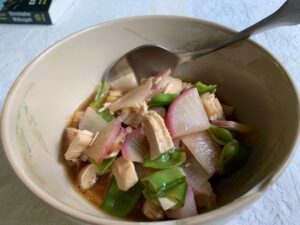
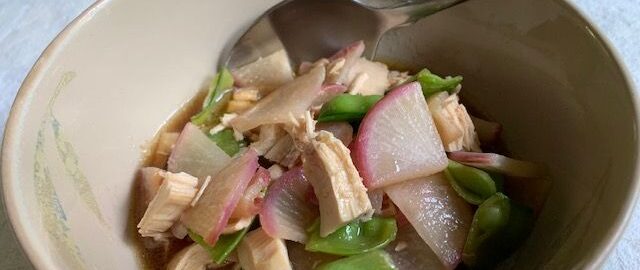
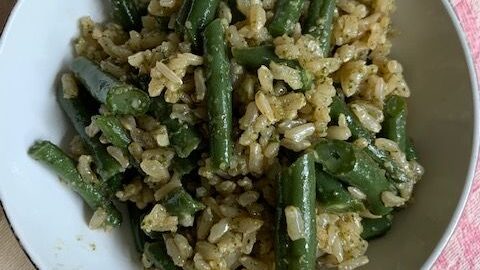
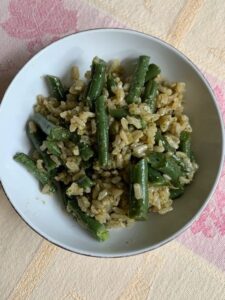

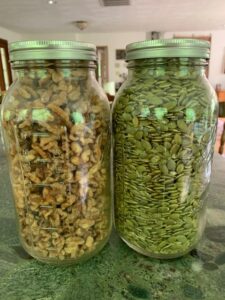
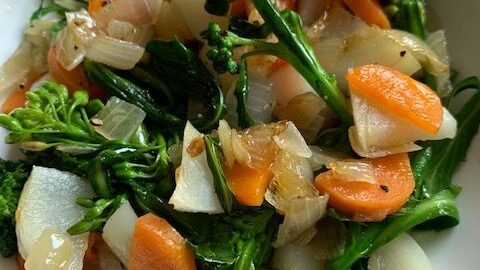
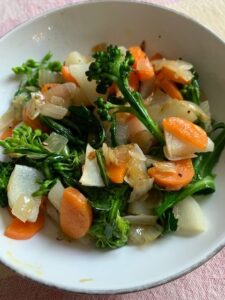 Daikon radish, though often overlooked, is a nice mild-tasting root vegetable addition to vegetable sautees. It belongs to the cruciferous family of vegetables which is known for many health benefits when included as part of a diet.
Daikon radish, though often overlooked, is a nice mild-tasting root vegetable addition to vegetable sautees. It belongs to the cruciferous family of vegetables which is known for many health benefits when included as part of a diet.